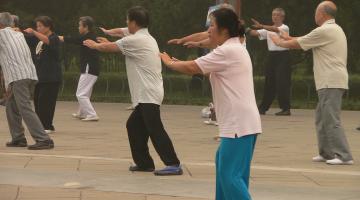Slip and Fall Settlements Without Surgery
Slip and fall accidents are common occurrences that can lead to significant injuries and financial burdens. Understanding the nuances of settlements, especially in cases that do not involve surgery, is crucial for anyone who has experienced such an incident. This article aims to provide a comprehensive guide to slip and fall settlements without surgery, covering everything from the medical implications to the legal aspects and steps to take after an accident.
Understanding Slip and Fall Accidents
Slip and fall accidents occur when an individual slips, trips, or falls due to hazardous conditions. These accidents can happen anywhere, but they are particularly common in residential properties, commercial properties, and public spaces. Common causes include wet floors, uneven surfaces, poor lighting, and obstacles left in walkways. Understanding the environment and conditions that lead to these accidents is essential for both prevention and legal action.
Medical Implications of Slip and Fall Accidents
The injuries sustained in slip and fall accidents can vary widely. Some of the most common injuries include soft tissue injuries, fractures and sprains, and head injuries. Soft tissue injuries, such as bruises, strains, and sprains, are often painful and may require physical therapy. Fractures and sprains can lead to prolonged periods of immobility and may necessitate the use of casts or braces. Head injuries, including concussions, are particularly concerning due to their potential long-term effects. Regardless of the injury type, it is crucial to seek medical evaluation immediately after a slip and fall accident to document the injuries and receive appropriate treatment.
Legal Aspects of Slip and Fall Settlements
When it comes to slip and fall accidents, liability and negligence are key factors in determining settlements. Property owners have a duty to maintain safe conditions, and failure to do so can make them liable for any resulting injuries. Documenting the incident is vital for building a strong case. This includes taking photographs of the hazardous conditions, collecting witness statements, and keeping detailed medical records. Proper documentation can significantly impact the outcome of a settlement.
Settlements Without Surgery
Settlements for slip and fall cases that do not involve surgery are influenced by several factors. The severity of the injury plays a significant role, as more severe injuries typically result in higher settlements. The impact of the injury on daily life is another crucial factor; for instance, if the injury prevents an individual from performing their job or daily activities, the settlement amount may increase. Medical expenses, even for non-surgical treatments, can add up quickly and are considered in the settlement process.
Types of compensation available in these settlements include coverage for medical bills, lost wages due to time off work, and compensation for pain and suffering. Each case is unique, and the specific circumstances will dictate the final settlement amount.
Case Studies and Examples
Real-life examples of slip and fall settlements without surgery can provide valuable insights into what to expect. For instance, a case involving a minor sprain that required physical therapy might result in a settlement covering medical expenses and a small amount for pain and suffering. Another example could be a slip and fall at a grocery store leading to a head injury that did not require surgery but did necessitate ongoing medical treatment and time off work. Analyzing these examples helps to understand the factors that influence settlement amounts and the potential outcomes for similar cases.
Steps to Take After a Slip and Fall Accident
Knowing what steps to take immediately after a slip and fall accident is crucial for protecting your health and legal rights. The first and most important step is to seek medical attention, even if the injuries seem minor. Prompt medical evaluation ensures that injuries are documented, which is essential for any future legal action. Reporting the incident to the property owner or manager is also important, as it creates an official record of the accident.
Long-term considerations after a slip and fall accident include ongoing medical treatment and legal consultation. Even if surgery is not required, follow-up appointments, physical therapy, and other treatments may be necessary to ensure a full recovery. Keeping detailed records of all medical treatments and expenses is crucial for building a strong case.
Challenges in Slip and Fall Cases Without Surgery
Proving the extent of injuries in slip and fall cases that do not involve surgery can be challenging. Soft tissue injuries and other non-surgical conditions may not be as visibly apparent as fractures or other severe injuries, making it harder to demonstrate their impact. Detailed medical documentation and expert testimony can help substantiate the claims.
Negotiating with insurance companies is another significant challenge. Insurance adjusters often aim to minimize payouts, and without the obvious evidence of surgery, they may argue that the injuries are not severe. Having a well-documented case and understanding the tactics used by insurance companies can improve the chances of a fair settlement.
Legal representation is often crucial in these cases. An experienced attorney can help navigate the complexities of the legal system, negotiate with insurance companies, and ensure that all necessary documentation is in place. While it is possible to handle a slip and fall case without an attorney, professional legal help can significantly increase the likelihood of a favorable outcome.
Conclusion
Slip and fall accidents can lead to significant injuries and financial burdens, even when surgery is not required. Understanding the medical implications, legal aspects, and steps to take after an accident is crucial for anyone who has experienced such an incident. Proper documentation, medical evaluation, and legal representation can make a substantial difference in the outcome of a settlement.
If you or someone you know has been injured at a grocery store, it is essential to take immediate action to protect your health and legal rights. By following the guidelines outlined in this article, you can better navigate the complexities of slip and fall settlements without surgery and secure the compensation you deserve.
More to Read:
Previous Posts:







